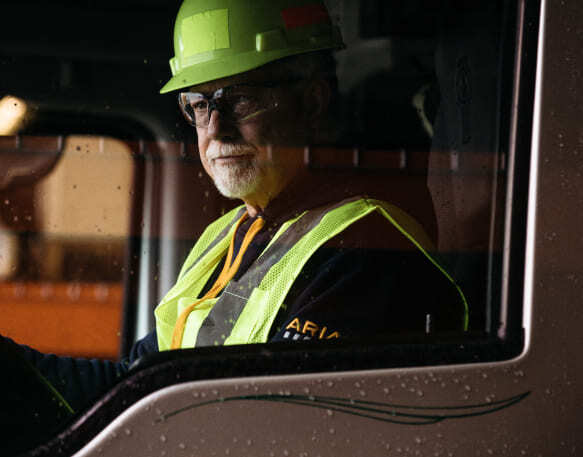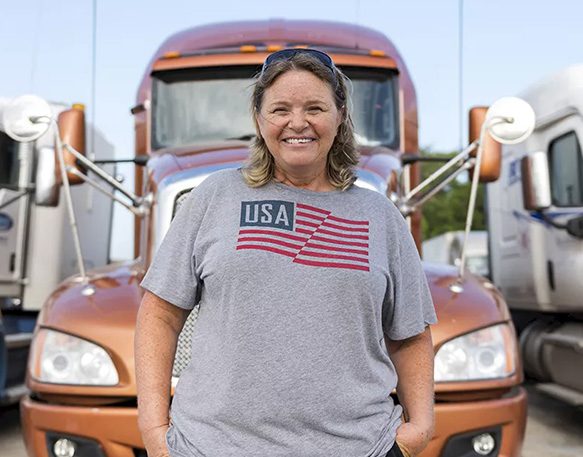Trucking can be an exciting and rewarding career, but it often involves long hours and requires safety precautions to avoid dangerous road conditions. To promote safety and prevent accidents, the Federal Motor Carrier Safety Administration (FMCSA) mandates the “14-hour rule,” limiting drivers to a maximum of 14 hours of operation at a time. To ensure compliance, the FMCSA also requires electronic logging devices (ELDs) for most commercial vehicles in the U.S.
If you’re wondering what an ELD is, what it records, and who needs one, this guide covers everything you need to know about ELD trucking regulations.
What is an ELD?
An electronic logging device is hardware installed in a commercial vehicle to track hours of service (HOS) and ensure road safety. It connects to the vehicle’s engine, automatically logging data whenever the vehicle moves faster than five miles per hour. ELDs also feature a driver interface, often with an app for additional compliance tools, and some provide HOS limit alerts.
Most ELDs use MOBI to track journey data and must be FMCSA-approved. Costs range from $419 to $899, with lower-priced options available on subscription, offering features like voice command, diagnostics, and GPS navigation in addition to required compliance functions.
What is the ELD mandate?
FMCSA’s ELD mandate has been in effect since December 2017, specifically designed to enhance working conditions for commercial drivers and improve public road safety. As part of this regulation, vehicles required to comply with ELD standards have now transitioned from traditional paper logbooks to sophisticated electronic logging devices. These advanced devices streamline the process by automatically capturing and transmitting HOS data directly from the vehicle’s engine to a digital logbook, ensuring accuracy and compliance with minimal driver intervention.
What information does an ELD capture?
To ensure the safety of commercial drivers, the FMCSA mandates that ELDs collect various types of data, including:
Automatically recorded data:
- Date, time, location information
- Engine hours and vehicle miles
- Identification of drivers, authenticated users, vehicles, and motor carriers
- Safety events, such as harsh braking and collisions
- Location data recorded at 60-minute intervals, engine start/shutdown, duty status changes, and personal use or yard moves
Data not required:
- Specific street addresses (only approximate geo-location is recorded)
- Vehicle speed, braking action, steering function, or other performance metrics
Team driving requirements:
- Each driver must be logged in at all times
- Co-drivers cannot switch roles while the vehicle is in motion
- Drivers can manually update HOS information if not currently operating the vehicle, using tools like an Excel spreadsheet or the ELD software
Why do truckers need ELD?
The FMCSA requires ELDs to ensure compliance with HOS regulations and other federal standards. Here’s how these devices are used to meet regulatory requirements:
- Comply with HOS regulations: ELDs enforce FMCSA rules, such as the 14-hour driving limit and 10-hour off-duty requirement, ensuring drivers get adequate rest.
- Accountability: ELDs hold employers accountable by ensuring they cannot enforce unsafe driving practices, leading to a significant decrease in HOS violations.
- Real-time data logging: These devices capture vehicle data, such as engine hours and location, to provide accurate compliance records.
Who is required to have an ELD?
Most drivers operating a commercial motor vehicle (CMV) for hire across state lines must comply with the ELD mandate. This includes vehicles over 10,000 pounds or with a gross weight rating above 10,000 pounds. It also applies to vehicles designed to carry nine or more passengers (including the driver) for hire, vehicles designed to carry 16 or more non-paying passengers (including the driver), and vehicles transporting hazardous materials that require warning signs.
What are the ELD mandate exemptions?
Certain drivers are exempt from ELD requirements. For instance, drivers who use paper logs no more than eight days within any 30-day period, as well as driveaway or towaway drivers where the vehicle is either a commodity or a motorhome/recreational vehicle with at least one set of wheels on the ground, do not need to use electronic logging devices.
Additionally, vehicles manufactured before the model year 2000 are also exempt from the ELD mandate. While some organizations such as the Truck Leasing and Renting Association, the Motion Picture Association, and UPS have received specific exemptions from the Department of Transportation, employers may still choose to require electronic logbooks for these vehicles and drivers.
What are the main benefits of an ELD for fleet managers?
ELDs can offer numerous advantages for fleet managers, making it easier to oversee operations and maintain compliance effectively:
- Improved compliance: ELDs ensure that drivers adhere to HOS regulations, reducing the risk of violations and associated fines.
- Enhanced efficiency: Real-time data from ELDs allows fleet managers to optimize routes, reduce idle time, and improve fuel efficiency.
- Accurate record-keeping: Automated logging reduces paperwork and minimizes errors, ensuring accurate and reliable records for audits and inspections.
- Cost savings: ELDs help identify inefficiencies, such as excessive idling or unauthorized vehicle use, which can reduce fuel and maintenance costs.
What is the ELD required paperwork?
While electronic logbooks reduce some paperwork for truck drivers, they don’t eliminate it entirely. Carriers and owner-operators must still keep certain documents in their vehicles to comply with FMCSA regulations, known as ELD mandate paperwork. This includes an FMCSA-approved ELD user manual, instructions for transferring ELD data to authorized officials, instructions for handling ELD malfunctions, and eight days of blank duty records to maintain compliance in case of a malfunction. Failure to carry these documents can lead to penalties during DOT inspections.
What are the different types of ELDs available?
There are several types of ELDs available, each offering unique features to meet the needs of different drivers and fleet managers:
- Integrated ELDs: These devices are directly connected to the vehicle’s engine and provide accurate tracking of HOS by capturing engine data, speed, and location in real-time.
- Bring Your Own Device (BYOD) ELDs: These ELDs use a smartphone or tablet, paired with an engine-connected device. The driver’s device acts as the interface for recording and viewing data, making it a cost-effective and flexible option.
- Dedicated ELD units: These are standalone devices with their own display and interface, specifically designed for ELD compliance. They are often more robust and come with additional features like diagnostics and navigation.
- ELD apps: Many ELDs come with mobile apps that provide additional features, such as route optimization, diagnostics, and safety alerts, enhancing usability.
Do short-haul drivers need ELDs?
Short-haul drivers are generally exempt from ELD requirements if they meet specific criteria set by the FMCSA. Drivers operating within a 150-air-mile radius and completing their workday within 14 hours are not required to use an ELD, provided they maintain accurate time records. However, if a short-haul driver exceeds these limits, they must use an ELD to remain compliant.
Enhance compliance and efficiency with ELDs
As we’ve explored, ELDs are essential tools for ensuring safety and compliance within the trucking industry. From preventing overwork and reducing accident rates to enhancing overall fleet efficiency, ELDs bring numerous benefits to truckers and fleet managers alike.
Embracing ELD technology supports compliance and drives significant improvements in operational efficiency and safety. Understanding who needs an ELD and the associated exemptions helps ensure your operations stay within regulatory boundaries.
Keep your fleet on the right track with DAT
Don’t let compliance challenges slow you down. Whether you’re a new driver or managing a fleet, staying up-to-date with CDL requirements and ELD regulations is crucial for your success. Partner with DAT for the tools, resources, and support you need to drive safely and confidently. Learn more about DAT’s carrier solutions, including our partnership with CleanFleet to help with driver compliance.




